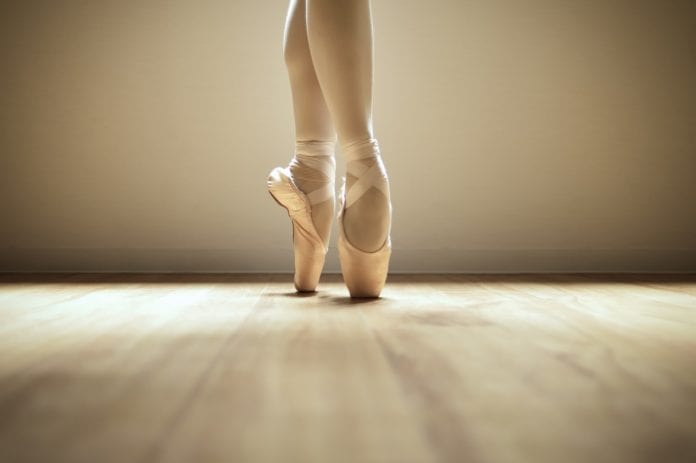If you’ve watched any of the ballet shows on TV that have risen in popularity, then you’ve likely seen a stern ballet teacher in the front of class barking at students about “turnout” and “foot position.” While these shows are certainly a dramatization of what happens at ballet school, they are clear on one thing: the importance of proper technique.
A ballet dancer is able to create strong, clean and graceful lines with their body. One place that illusion can become broken is with the foot. When a dancer “sickles” their foot, their toes break the line from the heel.
Sickling as a Cause of Dance Injury
Sickled feet impacts a dancer’s movement and lines, and it can also lead to ankle instability, tendonitis and injury. There is even a medical term for it: supination.
“When your foot is in a supinated position, the peroneal tendons on the outer ankle are stretched,” explains Jason Bariteau, MD, orthopaedic surgeon at Emory Healthcare. “That can lead to pain, weakness and injury.”
Over his experience working with dancers at the Atlanta Ballet and alongside physical therapists, he realizes some dancers may naturally sickle their feet.
“Sometimes chronic ankle instability leads to sickling and sometimes sickling causes those peroneal tendons to weaken. That, of course, leads to ankle instability,” says Dr. Bariteau. “It’s not always easy to say which came first.”
Treating and Preventing Sickled Feet
Injury caused by sickling your feet needs to be diagnosed and treated by a medical professional. But, Dr. Bariteau recommends taking a proactive approach.
“If you or a parent, teacher or coach notice you’re sickling your feet, you should start working with a physical therapist — one who has experience working with dancers,” he encourages.
“A knowledgeable physical therapist can pick up on subtle findings, identify the problem and help correct habits. That early intervention will, hopefully, help you avoid serious injury,” he adds.
Studies have shown that working with physical therapists and physicians familiar with dance and dance-related injury can help you return to dance and even help avoid future injury.
Your physical therapist can also offer at-home exercises for you to do to improve your strength and technique. You may also want to work on developing proprioception, which is your awareness of how your body is positioned. When you are more aware of each line and angle of your body, you can more easily recognize improper technique and correct it.
Here’s a simple way you can practice proprioception:
- Sit down on the floor and extend your legs in front of you.
- Close your eyes. Flex your feet and then slowly point your toes.
- Now, open your eyes while your toes are still pointed. Notice how your feet are positioned and how that feels in your body.
Proprioception can help you improve your overall form and even notice early signs of any injury — making sure you get the experienced and proven care you need to get back to the studio.
About Emory Orthopaedics & Spine Center
Emory Orthopaedics & Spine Center offers a full range of services to diagnose, treat and repair bones, joints and connective tissue such as muscles and tendons. Our team puts your health and well-being first. Part of our commitment to patients is making sure you receive the care you need when you need it.
Your team at Emory Orthopaedics & Spine Center is now offering telehealth visits. Our healthcare professionals use videoconferencing to evaluate, diagnose and treat patients, using devices like your mobile phone or computer. Hear from one patient how it works.



